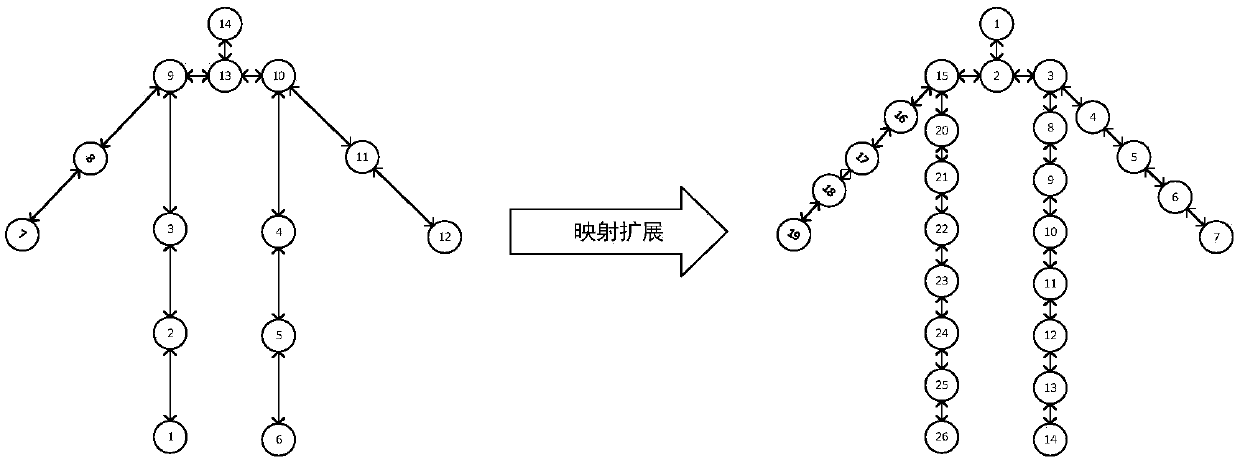Human posture estimation method based on deformable convolutional neural network
A convolutional neural network and human posture technology, applied in the field of deep learning and computer vision, can solve problems such as low prediction accuracy, fusion of deep learning and attitude expression information, and estimation accuracy constraints, and achieve the effect of improving the recognition rate.
- Summary
- Abstract
- Description
- Claims
- Application Information
AI Technical Summary
Problems solved by technology
Method used
Image
Examples
Embodiment 1
[0058] combine Figure 1-Figure 5 As shown, a method for estimating human body posture based on a deformable convolutional neural network disclosed in this embodiment includes the following steps:
[0059] Step a: Preprocessing the input data set, including expanding and segmenting the data set image;
[0060] Step b: Perform K-means clustering on the training set images;
[0061] Step c: Using the K-means clustering result as a label, input the training set into the deformable convolutional neural network for training;
[0062] Step d: Construct a scoring function F to train SVM for joint classification;
[0063] Step e: output processing;
[0064] The input data preprocessing includes:
[0065] a.1 read data set: in order to effectively train the network to improve the recognition rate of joint points, and to effectively illustrate the effectiveness of the present invention, the data set of the present invention has selected LSP (Leeds Sports Pose Dataset) data set and I...
Embodiment 2
[0068] Specifically, the step b includes performing K-means clustering on the training set pictures; the result of the clustering makes the adjacent joints in the same cluster, and at the same time uses the clustering result as a label, it is considered that there is a dependency between joints in the same cluster relationship, and input the clustering results into the convolutional neural network for training, so that the neural network has the function of identifying the dependencies between joints.
Embodiment 3
[0070] Specifically, the deformable convolutional neural network in the present invention includes a deformable convolutional layer, 3 traditional convolutional layers, 2 fully connected layers and an output layer; the training set fragments in the input neural network include two Information: one is the pixel position of the joint point, and the other is the dependency relationship between adjacent joints. The present invention obtains the apparent features of joint point image fragments through a deep convolutional neural network, and at the same time trains and recognizes dependencies between adjacent joint points. The kernel function adopted by the convolution layer in the neural network is a variable convolution kernel, which is specifically: the variable convolution layer adds an offset variable to the position of each sampling point in the convolution kernel; the present invention The partial convolutional layer of the convolutional neural network constructed in is diff...
PUM
 Login to View More
Login to View More Abstract
Description
Claims
Application Information
 Login to View More
Login to View More - R&D
- Intellectual Property
- Life Sciences
- Materials
- Tech Scout
- Unparalleled Data Quality
- Higher Quality Content
- 60% Fewer Hallucinations
Browse by: Latest US Patents, China's latest patents, Technical Efficacy Thesaurus, Application Domain, Technology Topic, Popular Technical Reports.
© 2025 PatSnap. All rights reserved.Legal|Privacy policy|Modern Slavery Act Transparency Statement|Sitemap|About US| Contact US: help@patsnap.com



